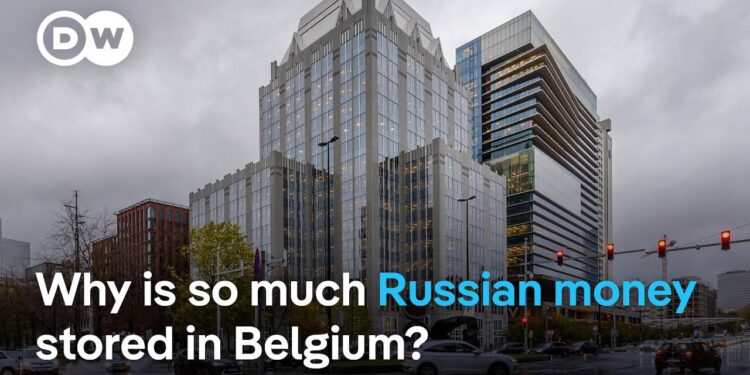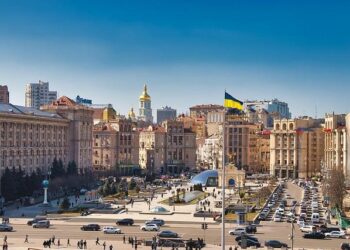The European Union is moving forward with plans to endorse a controversial agreement that would transfer seized Russian assets to Ukraine, aiming to bolster Kyiv’s resources amid ongoing conflict. The deal, which has sparked debate among member states and legal experts, represents a significant and unprecedented step in the EU’s response to Russia’s invasion. As negotiations intensify, the bloc faces critical questions over the legality, political implications, and potential impact of repurposing frozen Russian funds to support Ukraine’s reconstruction and defense efforts.
EU Pushes Forward with Controversial Plan to Transfer Russian Assets to Ukraine
The European Union is steadily advancing a highly debated initiative that intends to freeze and reallocate assets seized from Russian individuals and entities directly to Ukraine. This unprecedented move is designed to provide Kyiv with critical financial resources amid the ongoing conflict, yet it faces sharp criticism from several member states and international legal experts who question the implications for property rights and international law. Key EU officials argue that this measure serves as a necessary step to support Ukraine’s reconstruction and to hold Moscow accountable for its aggression. Supporters emphasize the strategic and moral justification of effectively turning frozen Russian wealth into tangible aid for a nation under siege.
Opposition voices warn of potential legal battles and the risks of setting a precarious precedent for asset seizures during geopolitical conflicts. The debate highlights concerns around transparency, governance, and the exact mechanisms for asset distribution. Below is a summary of the proposed framework and the main points of contention:
- Asset Categories: Including frozen bank accounts, luxury properties, yachts.
- Management: Establishment of an EU trust fund to oversee allocation and use.
- Legal Challenges: Questions on respecting due process and international property rights.
- Political Impact: Straining EU-Russia diplomatic relations further.
| Aspect | Supporters’ View | Critics’ Concerns |
|---|---|---|
| Asset Use | Boost Ukraine’s crisis response | Potential misappropriation risks |
| Legal Foundation | New EU regulations | Conflicts with international law |
| Political Consequences | Demonstrates EU solidarity | Escalates tensions with Russia |
Legal and Diplomatic Challenges Surrounding the Asset Redistribution
The proposal to redirect frozen Russian assets to Ukraine has ignited a complex web of legal disputes and diplomatic tensions within the European Union. Central to the challenge is the absence of a clear international legal framework that explicitly authorizes the seizure and reallocation of sovereign assets in this manner. EU member states face the delicate task of balancing punitive measures against Russia with adherence to international law and bilateral treaty obligations. Moreover, concerns over sovereignty rights and the risk of setting controversial precedents have triggered hesitation among some nations.
In addition to legal hurdles, the diplomatic landscape remains fractured. Key points of contention include:
- Potential retaliatory actions from Russia against EU interests abroad.
- The reluctance of some EU members who fear escalating geopolitical conflicts.
- Varied interpretations of asset ownership between commercial entities and state actors.
| Stakeholder | Primary Concern | Potential Outcome |
|---|---|---|
| EU Member States | Legal Integrity & Diplomatic Balance | Policy Fragmentation |
| Ukraine | Securing Reparations | Increased Financial Support |
| Russia | Asset Protection & Sovereignty | International Legal Challenges |
Experts Urge Clear Guidelines and Transparency to Ensure Fair Implementation
Authorities and legal experts emphasize that the success of the proposed transfer of Russian assets to Ukraine hinges on establishing clear and consistent rules to govern the process. Ambiguities in the current framework risk creating loopholes that could lead to disputes or misuse of funds. Transparency is therefore deemed non-negotiable, ensuring all transactions are properly documented and open to scrutiny by relevant oversight bodies and the public alike.
Stakeholders have outlined key elements they believe must be embedded in the implementation strategy:
- Detailed criteria for asset identification and valuation
- Robust monitoring mechanisms to track asset movement and usage
- Regular public reporting to maintain accountability
- International cooperation to close potential legal gaps
| Aspect | Recommended Action | Expected Outcome |
|---|---|---|
| Asset Valuation | Standardized auditing by independent experts | Accurate, fair estimations |
| Transparency | Open-access reporting platforms | Public trust and oversight |
| Legal Oversight | Cross-border regulatory collaboration | Minimized legal challenges |
In Retrospect
As the European Union moves closer to endorsing the contentious deal to allocate seized Russian assets to Ukraine, the decision underscores the bloc’s growing commitment to supporting Kyiv amid ongoing conflict. While the proposal faces legal and political hurdles, its potential implementation marks a significant shift in the EU’s approach to holding Russia accountable and providing tangible aid to Ukraine. Observers will be watching closely as member states debate the implications of this landmark agreement in the weeks ahead.
















